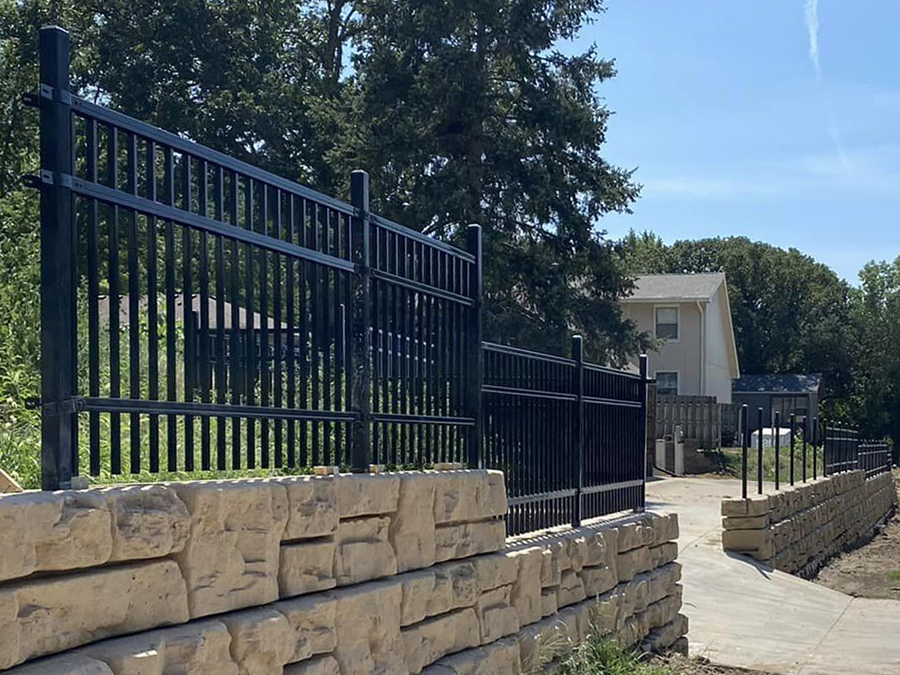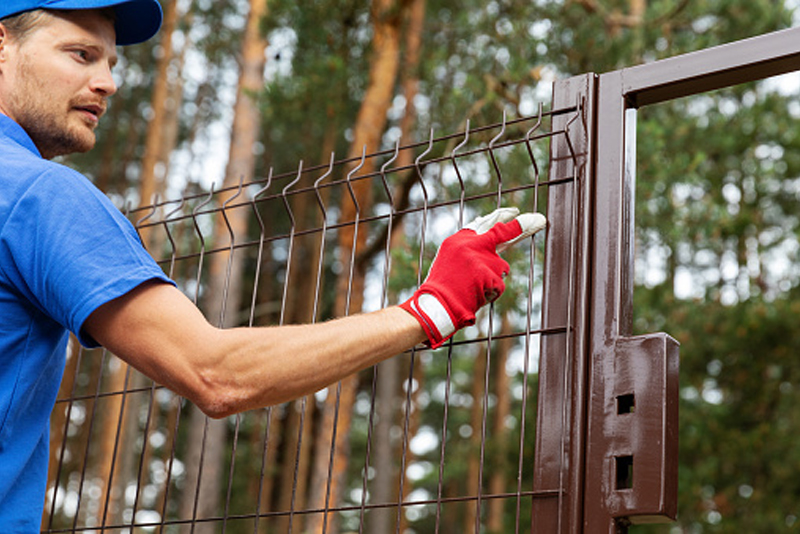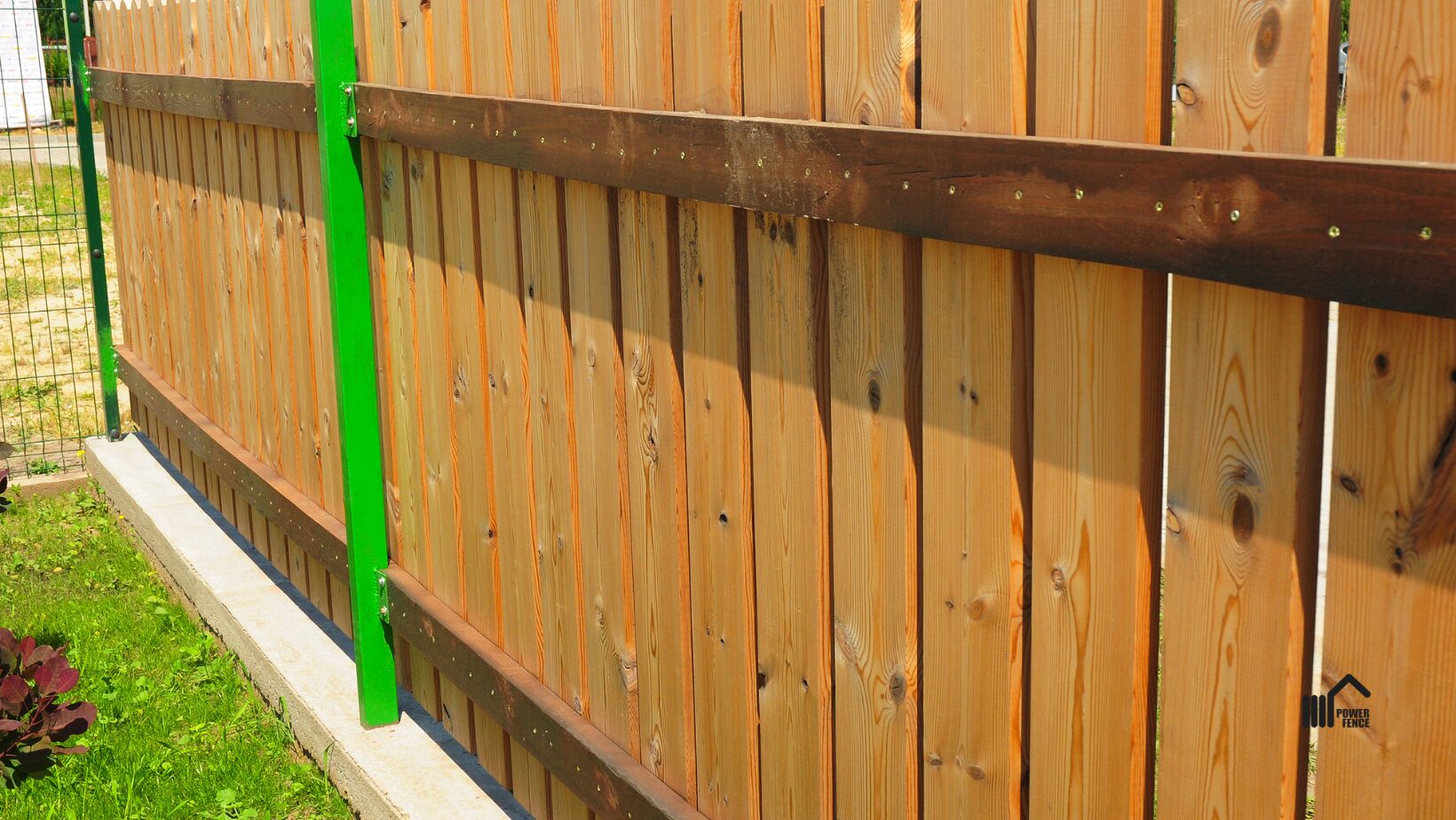Fast Fence Repair Solutions for Storm or Wind Damage
Wiki Article
Exactly How to Identify Common Issues That Need Immediate Fencing Repair
It is vital to spot concerns before they become larger troubles when it comes to keeping your fencing. Regularly checking for indications of deteriorating timber, leaning panels, or rust can save you time and cash over time. You might not understand just how weather and pests can endanger your fencing's integrity. Allow's check out the usual signs that indicate your fence needs prompt focus, so you can maintain your property safe and looking its best.Indications of Rotting Wood in Wooden Fences
Have you observed your wood fence looking a bit even worse for wear? If so, it may be time to look for signs of decaying wood. First, examine the base of the messages and panels for soft spots. That's a clear indication of rot if you push on the timber and it really feels mushy or falls apart. Next, seek discoloration or dark places on the wood-- these usually signal dampness damages. Focus on any kind of peeling paint or surface, as this can expose the wood to additional decay. In addition, a pungent, musty odor can show fungal growth. Don't neglect to check connections and joints; if they hang or crumbling, the timber under is most likely compromised. By capturing these signs early, you can protect against extra extensive damage and keep your fence standing solid. Routine maintenance is key to prolonging the life of your wooden fencing.Leaning or Tilting Fence Panels
If you've observed your fencing panels tilting or leaning, it's essential to understand what created it. This concern may show underlying structural damages that needs your focus. Allow's explore the usual reasons and the repair service options offered to obtain your fencing back in shape.
Root Causes Of Leaning Panels
It's frequently an indicator of underlying issues that require addressing when you observe your fence panels turning or leaning. One common reason is poor drain; extreme water can deteriorate the dirt around the fencing messages, deteriorating their support. One more wrongdoer could be solid winds or storms that push versus the panels, particularly if they're not correctly anchored. Additionally, the natural settling of dirt in time can create posts to move, resulting in a tilt. Bugs, like termites, can endanger the honesty of wooden panels, causing them to lean. Inadequate installation methods might result in panels not being safely set, leaving them at risk to leaning under stress. Address these problems immediately to keep your fence's stability.
Indications of Architectural Damage
Noticing tilting or leaning fencing panels can be disconcerting, as these concerns frequently show structural damage that needs immediate interest. When your fencing starts to lean, it may indicate that the posts are shifting or that the soil around them has actually eroded. Pay attention to voids between posts or panels, as these can likewise suggest instability. deck builder. Additionally, check for cracks or splintering in the timber, which can weaken the overall structure. It could compromise the honesty of the fencing if you observe rust or corrosion on metal elements. Remember, ignoring these indicators can cause extra severe damages down the line, so it's necessary to assess the scenario quickly and take activity prior to it intensifiesFixing Options Available

Rust and Rust in Metal Fences
If you have a steel fencing, you could see rust and corrosion sneaking in gradually, especially if it's exposed to moisture. These problems not just influence the appearance of your fencing but can additionally compromise its architectural honesty. To determine rust, try to find reddish-brown places or patches, which suggest the steel is oxidizing. Rust can spread out swiftly if left neglected, deteriorating the fencing and leading to expensive repairs.To tackle corrosion and deterioration, you should clean the affected areas with a wire brush and apply a rust-inhibiting primer. When the guide dries out, consider painting the fence with a weather-resistant paint to shield it further. Routine maintenance, such as checking for indications of rust and retouching paint as needed, will aid extend your fence's life-span. Addressing these problems promptly guarantees your metal fence continues to be solid and aesthetically appealing for many years ahead.Cracks and Splits in Vinyl Fencing

Reasons of Vinyl Damage
Vinyl secure fencing is popular for its durability, yet it can still deal with cracks and divides due to different aspects. One major reason is extreme temperature level changes. It can deteriorate the material over time when vinyl expands in the warm and agreements in the chilly. Furthermore, direct exposure to severe sunlight can lead to UV deterioration, making the vinyl weak. Physical impacts, like unexpected collisions or heavy branches, can additionally create cracks. Poor installment or making use of low-quality products can aggravate these problems. Furthermore, age plays a role; older plastic fence is much more vulnerable to damage. Regular examinations can aid you determine these elements prior to they lead to significant troubles. Take aggressive procedures to guarantee your fencing stays solid and undamaged.Fixing Cracks Effectively
Cracks and splits in your vinyl fence can be worrying, resolving them immediately can avoid further damages and maintain the fence's appearance. First, evaluate the size of the split. For little fractures, a vinyl fixing kit usually includes adhesive that can bond the sides, providing a seamless solution. Clean the area completely before applying the glue, guaranteeing it adheres appropriately. For bigger splits, you may need to make use of a plastic spot. Cut the spot to dimension, use sticky around the sides, and press it firmly onto the split. Allow it to cure as per the producer's guidelines. Regular upkeep and fast repairs can extend your fence's life expectancy, keeping it looking terrific for many years to find.Loosened or Missing Fencing Blog Posts
Absent or loosened fence posts can undermine the security of your entire fence structure. It's important to address the concern instantly if you discover any type of blog posts tottering or leaning. Check for any kind of signs of movement, as this can bring about additional damage with time. You can quickly analyze the problem by providing each post a mild shake-- if it really feels unsteady, it's time to take action.For missing messages, you'll need to change them asap to keep your fencing's stability. Make sure they're firmly secured in the ground with concrete or crushed rock for added stability when you set up new messages. If a post hangs, tighten it by including added assistance or driving it deeper right into the ground.Ignoring these concerns can lead to bigger problems, like spaces in your fencing or perhaps complete collapse. Keep an eye on your posts and stay proactive about fixings!Damages From Weather Condition and Natural Elements
Climate and natural elements can inflict chaos on your fencing, bring about various kinds of damage that need punctual attention. Heavy rain can cause wood to rot, making it weak and unsteady. Snow accumulation may bend or damage panels, while strong winds can root out fencing blog posts or cause sections to lean.If you discover fractures or splintering in wood fences, it's an indication of drying out as a result of intense sunlight exposure. Meanwhile, metal fencings can rust if safety coverings diminish, particularly in coastal or moist areas.Inspect your fence frequently after storms or severe weather condition to catch any type of damage early. Dealing with these problems rapidly can save you from pricey repair work down the line. Don't wait up until a small trouble develops into a significant one; stay positive and maintain your surround top form to maintain both functionality and curb charm.Pest Infestation and Termite Damages
When you observe indicators of insect problem or termite damage, it's necessary to act swiftly to stop more devastation. Look for mud tubes along your fence or hollow-sounding timber, as these suggest termites are at work. You could also see little holes or frass, which is termite droppings appearing like sawdust. If you detect any one of these indicators, it's time to analyze the damage.Don' t wait until it's as well late; parasites can jeopardize your fencing's integrity. Check the surrounding area for ants or beetles, as they might be contributing to the problem. If you presume an infestation, think about speaking to a bug control expert to more info treat the issue.repairing and verify or changing affected areas of your fencing quickly not just recovers its toughness however also stops parasites from spreading additionally. Keep vigilant to keep your building safe and secure and pest-free.Often Asked Inquiries
How Frequently Should I Examine My Fencing for Damage?
You need to check your fence a minimum of two times a year, preferably throughout spring and autumn. Regular checks aid you identify damages early, saving you time and cash on fixings while maintaining your building's look and safety.Can I Repair a Fencing Myself or Work With a Professional?
You can most definitely repair a fencing yourself if you have the right devices and abilities. Hiring an expert warranties high quality job and conserves you time, specifically for complex fixings or substantial damages.What Tools Are Required for Standard Fence Repairs?
For fundamental fence repair work, you'll require tools like a hammer, screwdriver, pliers, a saw, a level, and measuring tape. deck builder. Depending upon the repair work, you could likewise call for nails, screws, or replacement boardsJust How Much Does Fence Repair Service Generally Price?
Fencing fixing costs vary extensively, however you can anticipate to pay between $200 and $1,500 depending upon materials, labor, and degree of damage. It's smart to obtain several quotes for the finest deal.
When Is the Finest Season for Fencing Fixes?
The most effective time for fence repairs is throughout light climate, generally in spring or very early autumn. You'll prevent extreme temperature levels, making it less complicated to work and making sure the products set correctly for lasting longevity (deck builder). Discovering tilting or leaning fencing panels can be alarming, as these concerns often suggest architectural damages that requires immediate interest. Loosened or missing fence messages can threaten the security of your whole fencing framework. Snow accumulation might flex or damage panels, while strong winds can uproot fence posts or create areas to lean.If you observe fractures or splintering in wood fencings, it's an indicator of drying out due to extreme sun exposure. Metal fences can rust if protective finishes use off, specifically in damp or coastal areas.Inspect your fence frequently after storms or severe weather to capture any type of damage early. Fence repair work costs vary extensively, but you can expect to pay in between $200 and $1,500 depending on materials, labor, and level of damageReport this wiki page